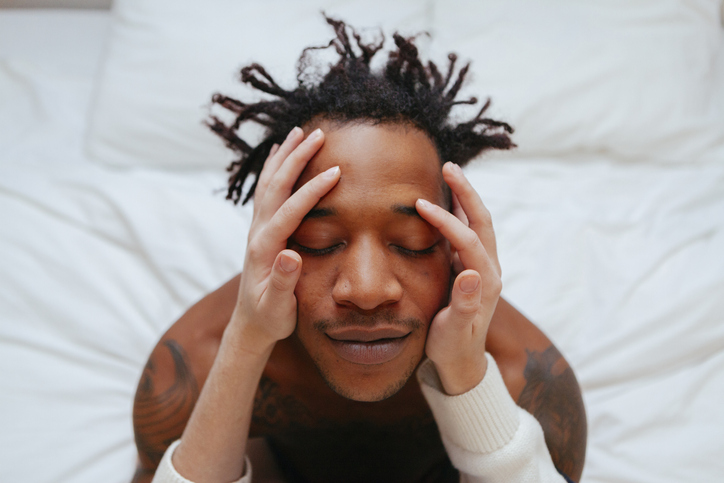
Provoked vestibulodynia (PVD) is a condition that can affect people who have vulvas, causing painful sex. It is a form of vulvodynia (pain in the vulva, or external female genitalia) that is characterized by pain with touch or pressure on the vulvar vestibule, which is the skin by the entrance to the urethra and vaginal opening.
What are the different types of vulvodynia?
Vulvodynia can be generalized, meaning that pain occurs in multiple parts of the vulva, or localized, meaning that it occurs in one specific place. Vestibulodynia is a type of localized vulvodynia because it only affects the vulvar vestibule. PVD is the most common type of vestibulodynia, and it is considered “provoked” because pain occurs as a result of touch or pressure on the vestibule.
What are the symptoms of provoked vestibulodynia?
The main symptom of PVD is dyspareunia, or painful intercourse. However, people with PVD may experience pain from nonsexual touching or pressure on the vestibule as well, such as when putting in a tampon or having a gynecological exam. Other symptoms related to PVD include:
- Burning, stinging, or cutting pain at the opening to the vagina
- Vestibular pain provoked by tight clothing, long periods of sitting, or sports like running, cycling, or horseback riding
- Painful urination, particularly after sex
- A vestibule that is raw and tender
What causes provoked vestibulodynia?
Although the research on exactly what causes PVD is ongoing, sexual health experts agree that there are three subtypes of vestibulodynia based on their causes:
- Neuroproliferative vestibulodynia
- Hormonally-mediated vestibulodynia
- Inflammatory vestibulodynia
Neuroproliferative vestibulodynia is caused by having too many nerve endings in the vestibule that make it extremely sensitive to touch. Hormonally-mediated vestibulodynia is the result of having free testosterone and/or estrogen levels that are too low, which can be caused by hormonal birth control, breastfeeding, or menopause. Lastly, inflammatory vestibulodynia is caused by chronic inflammation of the vestibule, which may be related to allergic reactions or infections.
How is provoked vestibulodynia treated?
Treatment for PVD depends on the cause of the condition. For example, hormonally-mediated vestibulodynia that has developed as a result of taking a medication should be treated by first stopping the medication (usually hormonal birth control). Then, a health care provider may prescribe a topical hormonal cream or gel to apply to the vestibule to help heal the tissues.
Topical anesthetic (e.g. lidocaine) may be transiently effective for managing the pain of neuroproliferative vestibulodynia as it dulls sensation at the vestibule. A more durable treatment is topical capsaicin, which offers more prolonged desensitization of the nerves, but only after an initial sensitization that aggravates the pain. In severe cases, surgery (vestibulectomy) may be considered for neuroproliferative vestibulodynia.
Pelvic floor physical therapy and cognitive behavioral therapy may be helpful for any type of PVD. If you believe you may have PVD, make an appointment with your health care provider to properly diagnose the condition and begin exploring treatment options.
References:
Cleveland Clinic. (2022, July 21). Vestibulodynia. https://my.clevelandclinic.org/health/diseases/23514-vestibulodynia
Henzell, H., Berzins, K., & Langford, J.P. (2017). Provoked vestibulodynia: current perspectives. International journal of women's health, 9, 631–642. https://doi.org/10.2147/IJWH.S113416
Rubin, R. (2022, February 25). Hormonally Mediated Vestibulodynia. Prosayla. https://www.prosayla.com/articles/hormonally-mediated-vestibulodynia
Rubin, R. (2022, February 27). Neuroproliferative Vestibulodynia. Prosayla. https://www.prosayla.com/articles/neuroproliferative-vestibulodynia
You may also be interested in...
Other Popular Articles

What Is Jelqing, and Does It Actually Work?
The term “jelqing” refers to a set of penis stretching exercises that some believe can make the penis bigger. Although the practice has gained attention and popularity in blogs and internet forums in recent years, there is no scientific evidence that it is an effective way to permanently increase the size of one’s penis. In fact, in some cases, jelqing may actually cause damage to the penis, so it is a good idea to get all the facts before setting off to try it.

What Is the Average Penis Size?
If you have ever wondered how your penis compares to others in terms of size, you are not alone. Many men are curious to know how their penises stack up compared to the average. Unfortunately, general curiosity can sometimes give way to full-on obsession and anxiety about penis size. This can be an unhealthy and often unnecessary fixation, especially because most men who think their penises are too small have perfectly normal-sized penises.

What Is Sensate Focus and How Does It Work?
Sensate focus is a technique used to improve intimacy and communication between partners around sex, reduce sexual performance anxiety, and shift away from ingrained, goal-oriented sexual patterns that may not be serving a couple.

Can Sex Reduce Menstrual Cramps?
The SMSNA periodically receives and publishes ‘guest editorials.’ The current article was submitted by Mia Barnes, a freelance writer and researcher who specializes in women's health, wellness, and healthy living. She is the Founder and Editor-in-Chief of Body+Mind Magazine.
Having sex while you experience menstrual cramps is healthy and can provide significant benefits. While it might not be the first activity that comes to mind when your PMS or period cramping begins, many people enjoy sex to reduce menstrual cramps, experience increased pleasure and benefit from other advantages. Learn more about having sex while menstrual cramps are happening and how it can help your body.

How Long Does It Take the Average Man to Ejaculate?
On average, it takes a man between 5 to 7 minutes to orgasm and ejaculate during sexual intercourse.

The Effect of Regular Aerobic Exercise on Erectile Function
Erectile dysfunction (ED) is the inability to achieve or maintain an erection sufficient for satisfactory sexual activity. As men get older, their erectile functioning may naturally decline due to changes in testosterone levels, cardiovascular functioning, and the potential development of other chronic medical conditions that become more common with age.
You are prohibited from using or uploading content you accessed through this website into external applications, bots, software, or websites, including those using artificial intelligence technologies and infrastructure, including deep learning, machine learning and large language models and generative AI.

